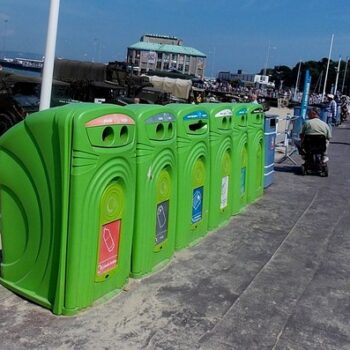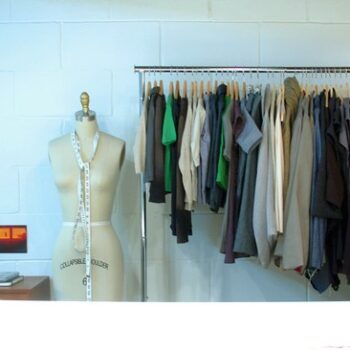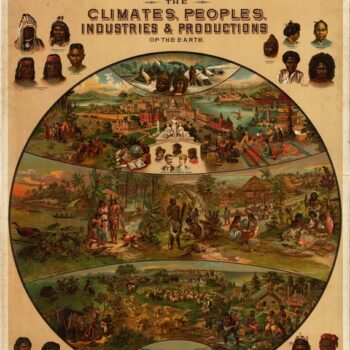How to Reduce Reuse Recycle Clothing
February 24, 2023Reduce, reuse and recycle is a great phrase to remember. Even sustainable fashion and textile recycling has an impact – cotton t shirts use a good deal of water and create post consumer and pre consumer waste. And if you want to reduce your environmental impact you can reduce the amount of clothing you wear and the textile waste from fast fashion landing in landfill each year. Start by reduce reuse recycle clothing – we’ll show you how.
Reducing your new clothing consumption
The first thing to consider for environmental protection is whether you can live with less brand-new clothes. It is easy to go to retail stores at the weekend and come back with a million tons of clothes that looked pretty on the rails, but you haven’t even tried on. When you do, it turns out that half of them don’t fit or don’t suit you. But then you keep them just in case, because maybe you’ll find something to go with them, or maybe you’ll change size, or you just like the fabric. Maybe you just can’t be bothered to go all the way back to the shop and stand in the returns queue. And so all these unworn sustainable clothes pile up.
Reduce Reuse Recycle Clothing and Celebrate Yourself!
Our tip here is to be really strict with yourself. You have to know what suits you and what doesn’t. A friend of mine has a phrase about clothes, “I like it but it doesn’t like me”. Well, it’s a bit harsh, but if your clothes don’t like you there’s only one thing for it: don’t buy them. Or if you’ve already bought them, don’t keep them but return them. It’s all much better for your bank balance and the planet.
Another friend of mine tells me she brings her “ghost body” with her when she goes thrift shopping. This refers to her acute knowledge of her own size and shape. It means that when she sees something on the rail, she knows instantly if it’s likely to fit. It’s good to take a clear-eyed view of your self like this. It’s not about criticising or hating your body. Far from it. It’s about celebrating yourself and not just going with current trends.
If you don’t like trying things on in a changing room, we hear you. But it can be a much swifter solution than buying things, taking them home, and then trudging all the way back to the shops to return them. If you do want to take them home, (and we know it can be useful in terms of trying them on with different underwear, in different light or with different clothes you already own), you must do so with the knowledge that you’re going to be back at that shop very soon. And when you are there, don’t give in to the temptation to buy something else!
Reduce reuse recycle clothing – Online Shopping
The same goes for shopping online. It is very difficult to tell how clothing will fit when you buy it on the web. The colour, fabric and feel might be different to how you expect. So it’s understandable that you buy the same item in different sizes. Or different colours, or just lots of different items. But when you hit “pay now”, do it knowing you’ll be queuing in the Post Office or waiting in for courier collection for sure.
And one thing you must beware of, online or off, is the sales. It’s very easy to think that it doesn’t matter if something’s not really the right size if it’s a huge bargain. And then you’ll find just the same thing: it doesn’t like you at all, no matter how much you try to like it.
What’s the solution?
To reduce, reuse and recycle you need to make charity shops, clothing swaps vintage shops and online re-sellers your best friends. If you like shopping, they will be a fabulous discovery. Although they are not entirely free from environmental impact. When they items arrive at the shop or come home to you, of course it uses transport energy. Unless, theoretically, you walked to the shop and the person donating the item also walked there.
But let’s not go down that rabbit hole, the fact is that pre-loved clothes don’t need to be manufactured and shipped long distances, so it saves all that water, pesticides, and resources used in making new things. You can shop to your heart’s content, and if you get it home and it doesn’t work well for you, you can still get a refund in most cases. If not, just donate it back or resell it yourself if it is in good condition for a bit of extra cash.
Reduce reuse recycle clothing – Charity Shops
Many people enjoy the thrill of the chase. Rummaging round thrift stores you never know what you might find! And they can be cheap, too. If you are looking for very good quality clothes that might be a bit more expensive, a top tip is to go to more affluent areas. Bargain hunters might get a shock, but you can get top designer brands in excellent condition for far less than you’d usually pay. And it’s still environmentally sound.
Vintage shops

Our Shop – Blue 17 Vintage Clothing on Holloway Rd, London.
I personally love vintage shops. It’s true that you still never know what you might find, so there’s that thrill of unexpected discoveries waiting to happen. But the clothing there is so much more quirky. It’s also usually sorted according to era. You will quickly know what era of clothing you are most drawn to and what suits you best. Many people find that the 1970s are fun and suit their shape. As a bonus they developed easy-care fabrics around that time, so to reduce, reuse and recycley ou can often wash and wear with no special hand-washing or ironing required. The period is relatively recent so clothes are no usually very fragile.
Or you may be drawn to older periods, such as the 1940s. Those World War 2 years have a special magic attached for many. It’s nice to think that some has hand-knitted the sweater you now hold. They might have made it from scraps from something else, and it probably brought them much joy.





